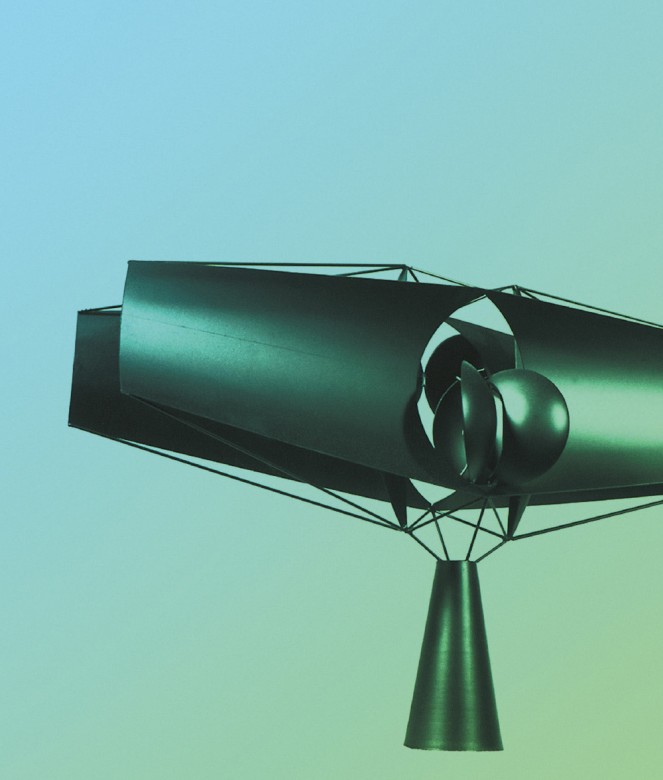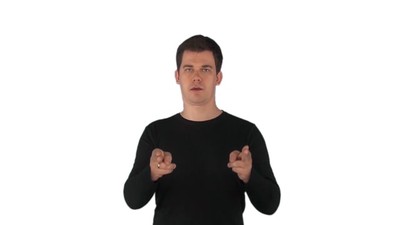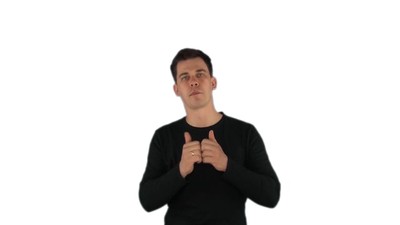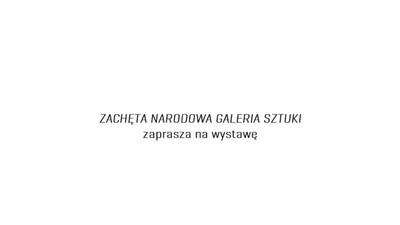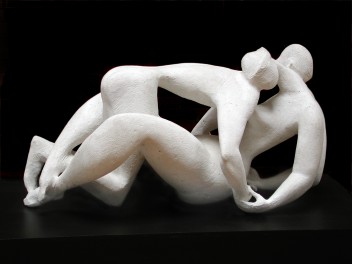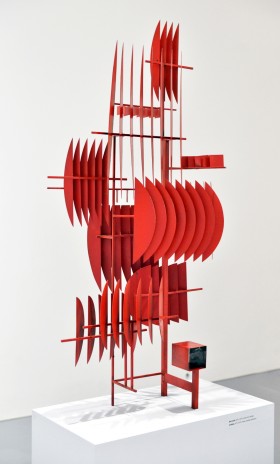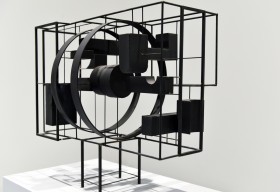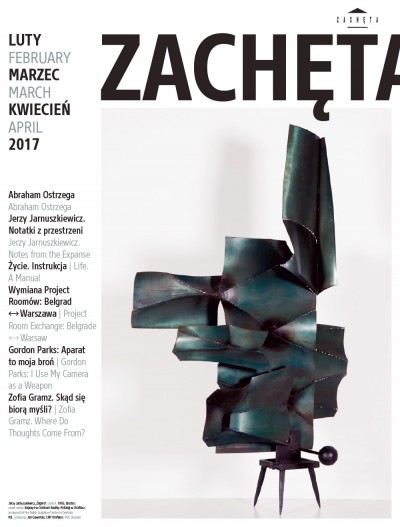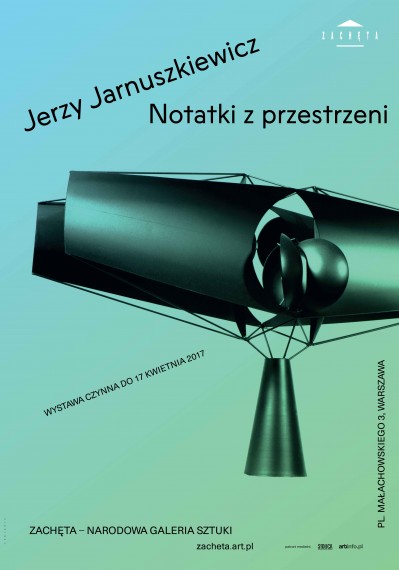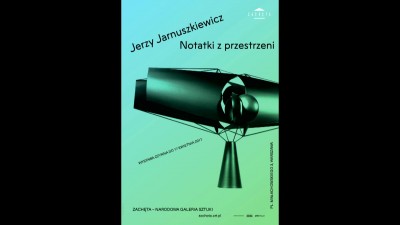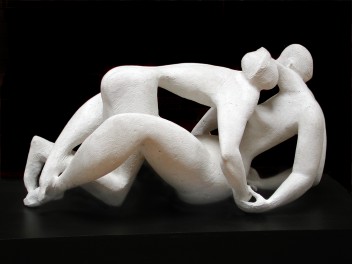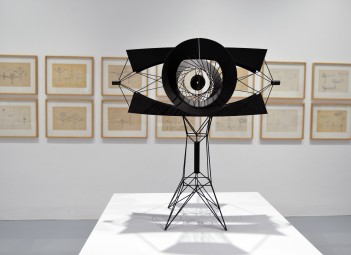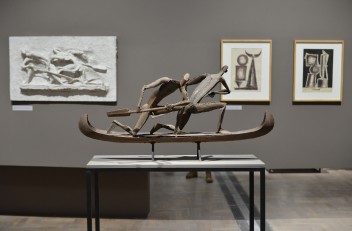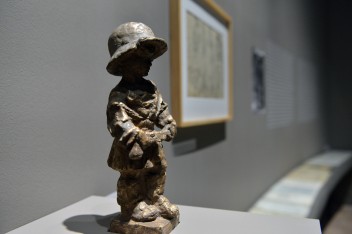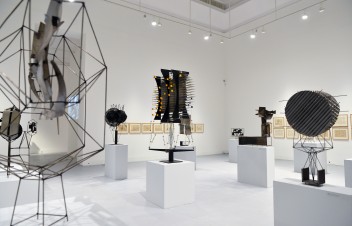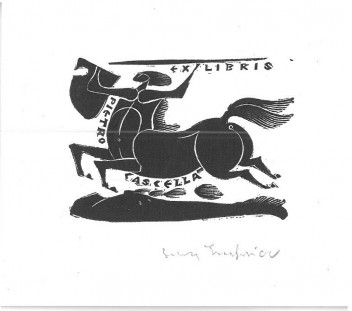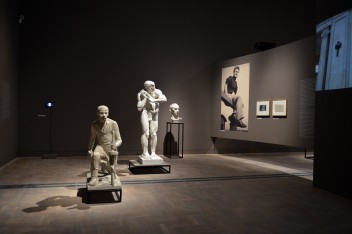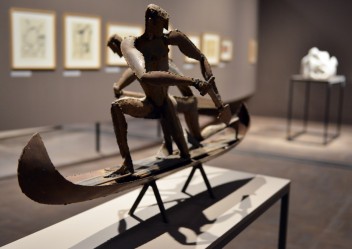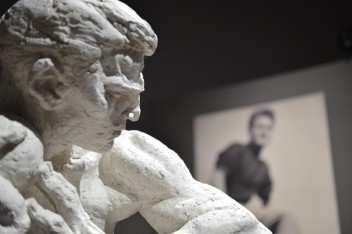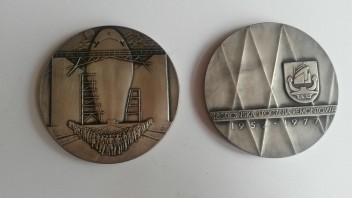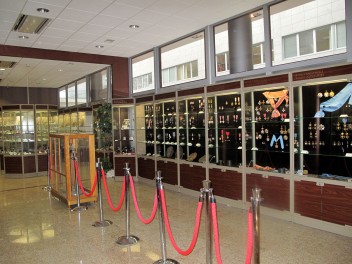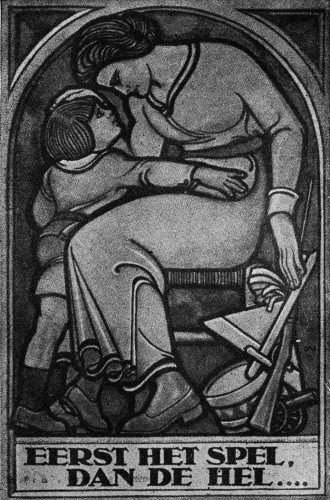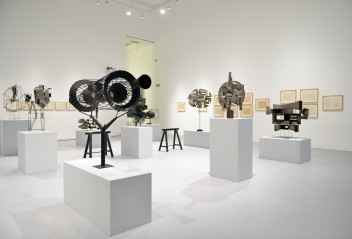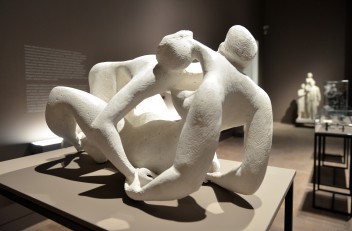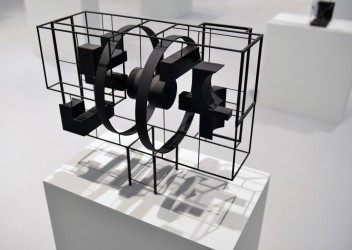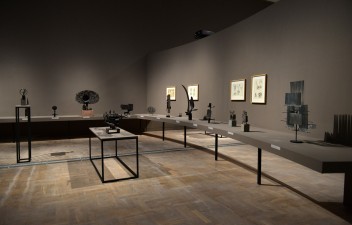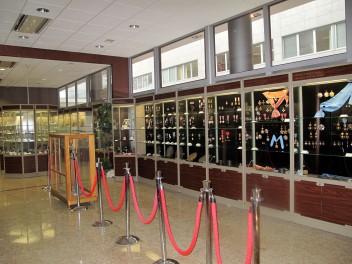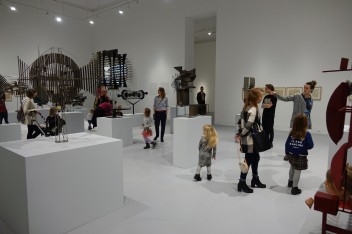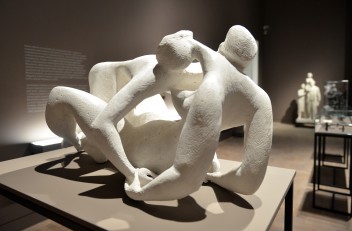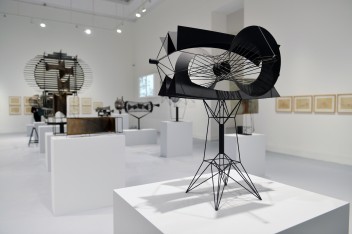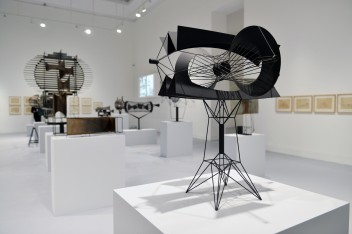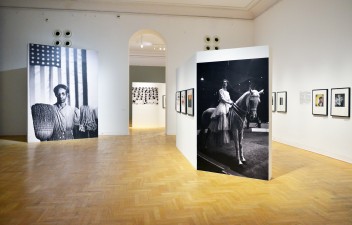Jerzy Jarnuszkiewicz Notes from the Expanse
27.01 – 17.04.2017 Jerzy Jarnuszkiewicz Notes from the Expanse
Zachęta – National Gallery of Art
curator: Waldemar Baraniewski
assistant curator for Zachęta: Julia Leopold
exhibition design: Robert Rumas
films: Michał Januszaniec
music: Włodzimierz Kotoński
Jerzy Jarnuszkiewicz. Notes from the Expanse is a monographic exhibition presenting the artist’s sculptural works, a large selection of medals and graphics, and a part of his oeuvre virtually unknown to the Polish audience: a collection of polychromed metal sculptures created on a residency in Canada. But the show’s purpose is not only to present the achievements of an outstanding sculptor, but also to highlight the versatility and magnitude of his talent as well as his role in shaping the modern artistic tradition in Poland.
The work of Jerzy Jarnuszkiewicz (1919-2005) is abundant, extremely diverse, fragmented, and, paradoxically, little known. It’s hard to pinpoint the exact moment when he became a sculptor in his own right, but his extraordinary manual talent meant that throughout his life he expressed himself with equal ease through drawing, graphic design, bookplate design, medal making, small-scale sculpture, as well as abstract and realistic monumental sculpture. His artistic vision divides into two principal currents. One is informed by a striving towards monumentality, expressive power, the expression of movement, and geometric analysis. The other, more private and decorative, is represented by works such as the geometric decorations at Katowicka Street in Warsaw or a kindergarten in Mariensztat, or the Lajkonik sculpture in the courtyard of the Dziekanka building, which hearken back to a 1930s aesthetic assimilated through a graphic artist’s experience. The need of artisanal precision and a penchant for detail informed the original shape of Jarnuszkiewicz’s small-size sculptures and medals, stretched between the seriousness of theme and the delicateness of form. These non-exclusive extremes meet in the well-known Little Insurgent figurine, designed in 1946 for a Ministry of Culture competition. Its small scale, sentimental style, and the ease of casting it in plaster all meant that it responded to the widely felt need for commemorating the tragic uprising of 1944, albeit in a private rather than heroic perspective. Also the official policy of belittling the heroism of the insurrection contributed to The Little Insurgent’s becoming a sentimental token of individual memory and emotions, a substitute of a nonexistent monument.
Jarnuszkiewicz was fluent in the realistic style, though he was always interested in the simplification and transformation of form. He is the author, for example, of the Steel Worker, one of the most successful monumental sculptures at the MDM housing estate in downtown Warsaw. Still, he constantly sought to go beyond the socialist-realist staple. In the exhibition at the Arsenal in Warsaw in 1955, he showed Girl Washing Her Hair, a piece surprising in the prosaicness of its theme (the motto of the exhibition was ‘Against War – Against Fascism’) as much as in its unconventional composition. At that time, the artist made a shift towards more subjective and personal imagery (Couple, 1955-1956), as well embracing ‘sports’ themes that allowed for more dynamic forms (Rowers, 1955-1956).
A new opening, not only for Jarnuszkiewicz but also for a larger group of young sculptors (e.g. Magdalena Więcek, Alina Szapocznikow, Alina Ślesińska, Tadeusz Łodziana, Barbara Zbrożyna), came with the Sculpture in the Garden exhibition in 1957 in Warsaw, where the artist showed two hyper-expressive pieces. Both were inspired by tragic events, whether personal (the Bitch, howling in pain) or public (the 1956 disaster at the Marcinelle coal mine in Belgium). The latter piece stands out as one of the finest examples of a committed attitude in the Polish art of the period.
At the turn of the 1950s and 1960s, Jarnuszkiewicz began moving away from issues of expressivity towards a new problematique of space and the surroundings as components of the sculptural work. In this vein, he contributed to the groundbreaking group designs for public monuments at Oświęcim and Grunwald as well as for the – almost forgotten today – planned bridge crossings of the Trasa Świętokrzyska and Trasa Łazienkowska thoroughfares in Warsaw (1961).
In the 1960s, Jarnuszkiewicz embraced a new material - metal – which offered new artistic possibilities. In 1964, he participated in the Forma Viva symposium in Ravne (then Yugoslavia), where he realised his first Spatial Composition. An abstract, rationally-shaped, large-scale structure, placed in the natural environment, fulfilled those intuitions that the Polish monument designs could not. A year later, Jarnuszkiewicz won the first prize at the 1st Biennale of Spatial Forms in Elbląg, for the Signpost Composition, and in the following years he executed monumental abstract sculptures in Ostrava and Aalborg. It was a time of major successes for him. His Rhythms II were featured in a major international sculpture exhibition at the Guggenheim Museum, curated by the renowned US art historian and curator, Edward R. Fry.
Those several years had decisively determined the nature of Jarnuszkiewicz’s sculptural work. His metal sculptures, expressive and metaphorical at first, later rational and analytical, comprise the most recognizable and most important part of his rich oeuvre.
From 1968 onwards, the artist worked on a monumental crucifix at the Catholic University of Lublin church. The unique sculpture of repoussé metal remains one of few examples in Polish contemporary art of a truly modern work that responds to liturgical needs. He also began – and would continue for the rest of his life – working on a Pietà for his parent’s grave. An important work of the turn of the 1970s and 1980s was a public monument to John Paul II and Stefan Wyszyński in Lublin (Homagium, 1979-1983). The Muzzles series, intended for 15 pieces, was to be a quintessence of Jarnuszkiewicz’s reflections on abstraction and figurativeness. Only one piece was made, the others are known from drawings only. The constrained, destructed heads, jammed inside monstrous machines, serve as a metaphor of enslavement, oppression, of the most acute contemporary experience: constantly renewed attempts to curtail human freedom.
Jerzy Jarnuszkiewicz
Notes from the Expanse
27.01 – 17.04.2017
Zachęta – National Gallery of Art
pl. Małachowskiego 3, 00-916 Warsaw
See on the map
Godziny otwarcia:
Tuesday – Sunday 12–8 p.m.
Thursday – free entry
ticket office is open until 7.30 p.m.
Digitization of photographic materials displayed on the exhibition "Jerzy Jarnuszkiewicz. Notes from the expanse" is made possible thanks to the Museum of History of Photography in Cracow:

